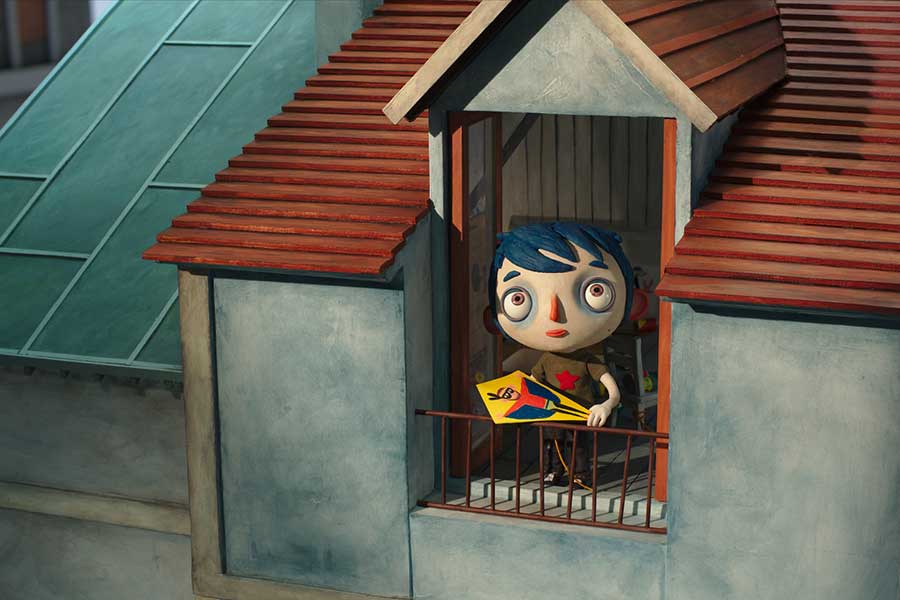Out French screenwriter (and frequent director) Céline Sciamma excels at making coming-of-age films.
Her latest, the Oscar-nominated animated film, “My Life as a Zucchini,” joins her previous adolescent tales “Water Lilies,” “Tomboy,” “Girlhood” and “Being Seventeen.”
The film, directed by Claude Barras, opens March 3 at the Ritz at the Bourse. It is showing in both an English-language version (during the daily matinees) that features the voices of out actor Ellen Page as well as Amy Sedaris, Nick Offerman and Will Forte. The original subtitled version screens at night.
Sciamma adapted “My Life as a Zucchini” from Gilles Paris’ young-adult novel. The film uses stop-motion animation to tell the story of a 9-year-old boy whose mother dies, sending the orphaned youth to go live in a foster home. While his real name is Icale, he prefers “Zucchini,” because that was what his late mother called him.
Once in the orphanage, Zucchini meets a handful of other young boys and girls who have suffered traumas ranging from addicted parents to sexual abuse. Zucchini tries to fit in with these other outcasts, and he does bond with several youths. However, he is the victim of bullying by Simon — who renames Zucchini “Potato,” because of his big head. When Simon steals Zucchini’s kite, the new kid fights back, gaining some respect from his tormentor.
The dynamic between the kids in the foster home changes yet again with the introduction of another youth, Camille, who is escaping from her abusive aunt. Zucchini starts to fall in love with Camille, and they sneak out together one night to have a heart-to-heart.
These tender moments, as well as an amusing comic set piece during a getaway to a ski resort, or a running gag about some of the orphans’ bad attitudes towards cops, add texture to this slight film. But “My Life as a Zucchini” isn’t particularly deep. There is some raunchy talk about sex, and some adult themes that suggest the film isn’t suitable for preteen viewers, but the animation style, full of bright colors and slow movements, is very evocative of the cartoons from most childhoods. This may be deliberate, to emphasize the young characters’ coming of age, getting of wisdom and losing their innocence. Then again, it may not.
While animation is often used to illustrate things that are not necessarily viable in real life, the stop-motion style only rarely employs its techniques to convey a point visually. The amusing episode in the ski resort features such scenes, as when a character tries on red-tinted glasses, turning the screen red, or during some playful bits with a snowman, but much of the film is realistic.
That said, the human characters are drawn with big heads and large eyes but small mouths that make them very expressive. When Zucchini lies awake in his bed the first night in the foster home, his anxiety is evident in his features.
Once Camille is introduced, “My Life as a Zucchini” sets up its main drama, which extends not just to the relationship that might develop between her and Zucchini, but also the efforts Camille’s aunt takes to get her niece back. (There’s money for the evil aunt if she does.) As Zucchini, Simon and the other kids enact a plan to help Camille remain in the foster home, Raymond, the policeman who delivered Zucchini to the orphanage, is considering adopting the two children.
Sciamma plays out these episodes without sentimentality, and that is why the film is so enjoyable, even with the slightly sensitive material. The orphans may be misfits defined by their characteristics — Jujube likes to eat toothpaste, even though it makes his stomach ache; another child wets the bed; a third has a habit of rattling her fork — but they are all endearing. Watching the kids express themselves, cutting loose and dancing at the ski resort one night is a small, fun moment. It may prompt viewers to think of the “Zucchini” characters with the same fondness they have for the kids from “Peanuts.”
And this may be the real theme of “My Life as a Zucchini.” Like many members of the LGBT community who find their real family with their friends, not their relatives, the kids in the foster home bond with one another because they all share a common characteristic: the fear that nobody loves them. As such, they decide to love each other. It’s a heartwarming message sensitively presented.
Viewers who enjoy “My Life as a Zucchini” should stay through the film’s ending credits, as there is a charming little interview vignette featuring the title character.

